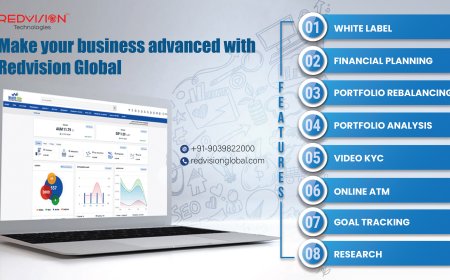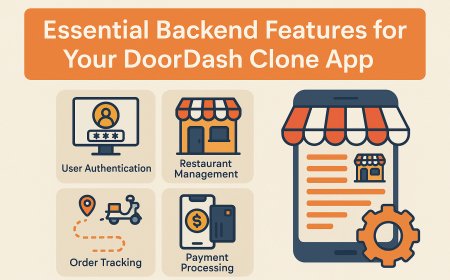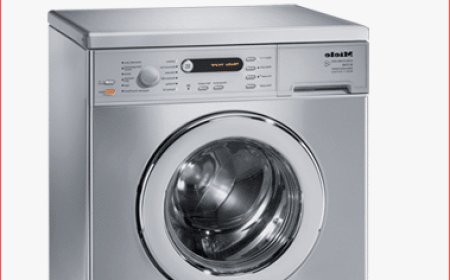Electronic Health Records (EHRs): Unlocking the Power of Digital Healthcare
Explore how EHRs enhance care quality, streamline billing, improve compliance, and empower patients—essential tools for modern digital healthcare success.

Healthcare has entered a new era of digital innovation, and Electronic Health Records (EHRs) are at the heart of this evolution. More than just replacing paper charts, EHRs are essential to improving clinical outcomes, enhancing medical billing accuracy, and empowering patient engagement through EMR billing integration and streamlined workflows.
Whether you're a provider, administrator, or part of a medical billing and coding company, understanding the full potential of EHRs is critical to optimizing your practices efficiency and revenue. This guide covers what EHRs are, their key advantages, common obstacles, and emerging trendsplus how to align them with revenue cycle management for maximum impact in your healthcare setting.
Defining Electronic Health Records (EHRs)
Electronic Health Records are comprehensive digital systems that store and manage patient health information securely. Unlike traditional paper files or simple electronic medical records (EMRs), EHRs enable the seamless sharing of data across healthcare organizations and care teams.
What Information is Included in EHRs?
An EHR contains detailed patient data, such as:
- Demographics (name, age, contact info)
- Complete medical history, including prior diagnoses and procedures
- Medication lists and allergy information
- Laboratory and imaging results
- Clinical notes from visits and treatments
- Immunizations and preventive care records
- Insurance and billing information
Because EHRs are updated continuously and accessible in real time, authorized users can make informed decisions anytime, anywhere.
EHRs vs. EMRs: Understanding the Difference
While often confused, Electronic Medical Records (EMRs) and Electronic Health Records (EHRs) differ:
- EMRs are digital versions of paper charts used within a single practice or facility.
- EHRs are designed for broader interoperability, allowing data exchange among multiple providers, specialists, hospitals, and patients.
This connectivity makes EHRs critical for coordinated, patient-centered care.
Why EHRs Matter: Key Benefits
The advantages of EHR adoption extend far beyond digitizing records:
1. Comprehensive and Integrated Patient Care
By centralizing all health information, EHRs provide clinicians with a complete picture of a patients medical status. This integration helps:
- Avoid duplicate tests and treatments
- Reduce medication errors through allergy and interaction checks
- Facilitate chronic disease management with updated progress notes
For example, a primary care provider can quickly review recent cardiology reports, lab results, and medication changes to tailor treatment effectively.
2. Streamlined Workflow and Communication
EHRs foster collaboration by allowing different providers to access shared patient data securely. This facilitates:
- Faster referrals and specialist consultations
- Synchronized care plans across disciplines
- Real-time updates on test results and medication changes
Administrative tasks also benefit: EHRs can automatically extract billing codes and generate claims, reducing paperwork and speeding revenue cycles.
3. Enhanced Security and Compliance
Protecting patient privacy is essential. EHRs employ:
- Role-based access to limit sensitive data exposure
- Encryption of data during transfer and storage
- Multi-factor authentication for user verification
- Audit trails to monitor access and changes
These features support compliance with HIPAA and other regulations, preserving patient trust.
Financial Impact: How EHRs Support Revenue Cycle Management
Though primarily clinical tools, EHRs significantly impact practice finances.
Accurate Documentation Leads to Correct Coding
Comprehensive EHR notes enable precise selection of billing codes (CPT, ICD-10), reducing the risk of undercoding or overcoding and avoiding claim denials or audits.
Automation of Claims Processing
Integration between EHRs and billing systems allows for:
- Automatic claim creation immediately after patient encounters
- Electronic submission to payers, bypassing manual entry
- Validation of claims for completeness before sending
These efficiencies shorten the payment cycle and improve cash flow.
Denial Reduction Through Data Verification
EHRs can flag incomplete or inconsistent documentation, preventing claims from being rejected due to missing information.
Additionally, denial management tools help identify patterns and implement corrective processes to reduce future denials.
Engaging Patients Through EHR Portals
Patient portals linked to EHRs empower individuals by providing:
- Access to test results, visit summaries, and medication lists
- Online scheduling and prescription refill requests
- Secure messaging with care teams
- Convenient electronic bill payments
Engaged patients tend to adhere better to treatment plans and fulfill financial obligations, benefiting both health outcomes and practice revenue.
Leveraging EHR Data for Continuous Improvement
EHRs generate valuable data that can be analyzed to optimize clinical and operational performance.
Clinical Quality Metrics
Providers can track performance on:
- Preventive care measures
- Chronic disease management
- Readmission rates
This information guides quality improvement initiatives.
Operational and Financial Analytics
Practice leaders can analyze billing trends, patient volumes, and staffing needs to enhance efficiency and profitability.
The Rise of AI and Automation in EHRs
Artificial Intelligence (AI) integration is enhancing EHR capabilities:
- Suggesting accurate billing codes based on clinical notes
- Detecting documentation errors or inconsistencies
- Predicting claims likely to be denied
- Offering clinical decision support to improve care quality
These innovations reduce administrative burden and improve accuracy.
Overcoming Common EHR Implementation Challenges
Challenges include:
- Learning curves for staff
- Data migration complexities
- Integration issues with legacy systems
- Potential user dissatisfaction due to system design
Successful deployments involve thorough planning, vendor support, and ongoing training.
Tailored EHR Solutions for Small Practices
Cloud-based, scalable EHR platforms are ideal for smaller practices needing affordable, flexible systems that support:
- Both in-office and telehealth services
- Built-in compliance safeguards
- Growth-ready infrastructure
Emerging Trends in EHR Technology
Looking ahead, expect to see:
- Voice-enabled documentation to save time
- Integration with wearable health devices
- Instant insurance eligibility verification
- Predictive billing software to flag risks before claim submission
Staying current helps practices remain efficient and competitive.
Conclusion: Making EHRs Work for You
EHRs are central to modern healthcare delivery, offering clinical, operational, and financial benefits. To realize their full potential, practices need to integrate EHRs with smart revenue cycle strategies and expert guidance.









































